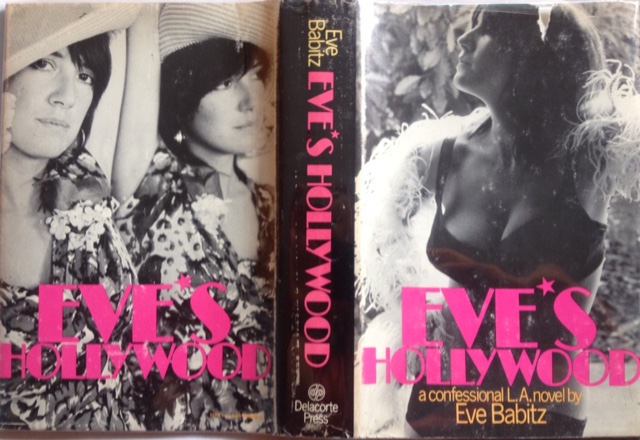Derek Taylor, the Beatles’ L.A.-based press agent and a man about the Sunset Strip, introduced Eve Babitz to the Fab Four as “the best girl in America.” Indeed, for a hot minute that spanned the 1950s, ’60s, and ’70s, the Hollywood native was a bright star in the galaxy of art and glamour that was Los Angeles. Bubbly, busty, and brainy, the child of bohemian parents raised on high culture and schooled on rock and roll, Babitz was part of the Ferus Gallery scene that made icons of Wallace Berman and Ed Ruscha (whom she dated).
Later, she was a habitué of the Troubadour and the Chateau Marmont, bedding Jim Morrison and creating album covers for rock bands including Buffalo Springfield. In 1963, at the age of 20, she played chess with Marcel Duchamp — naked — at the Pasadena Art Museum, an occasion that was immortalized by the photographer Julian Wasser (who also, incidentally, took the iconic photo of Joan Didion alongside her Corvette Stingray).
Unlike Didion, who’d dedicated herself early to her craft, Babitz seemingly became a writer just because she had so many great stories to tell. Many of them fill the pages of her first book, the “confessional L.A. novel” Eve’s Hollywood, first published in 1974. Eve’s Hollywood takes us from dances in the gymnasium at Hollywood High, to her parents’ famed salons, to a suite at the Chateau with a pile of pure cocaine and a southern heartbreaker who’s a dead ringer for Gram Parsons. Her writing style is so easy and breezy that it was, combined with her personal life, easy for critics to dismiss as insubstantial. It possesses none of the noir, Manson-tinged melodrama that is the ruling L.A. trope. This might explain why all seven of her books — including the glossy 1980 collectible Fiorucci the Book — have been out of print for decades, collected obsessively on eBay and in thrift stores by other nascent “It” girls.
Babitz retired from public life in 1997, after a horrific accident — her skirt caught on fire while she was driving, severely burning most of her body. After the incident, she has said, she simply didn’t feel like writing anymore. One can’t help but wonder whether the loss of her beauty and youth made Babitz feel powerless, and whether the city she loved might not have, in essence, turned its back on her. It’s a painful truth that we owe it to her to look at.
But we’re equally obligated to crack the cover of Eve’s Hollywood, featuring the author as photographed by Annie Leibovitz in full starlet mode, and settle in with this charming tour guide who takes a wasteland and gives us back a wonderland. Thanks in part to a reassessment of L.A.’s role in the history of modern art, Babitz herself has been rediscovered by a generation raised on both Didion and Sex and the City, one that believes a girl should be able to have her cake, wash it down with Champagne, and write about it, too. Eve’s Hollywood has just been reissued by New York Review Books. Go here, for an excerpt from the book.



